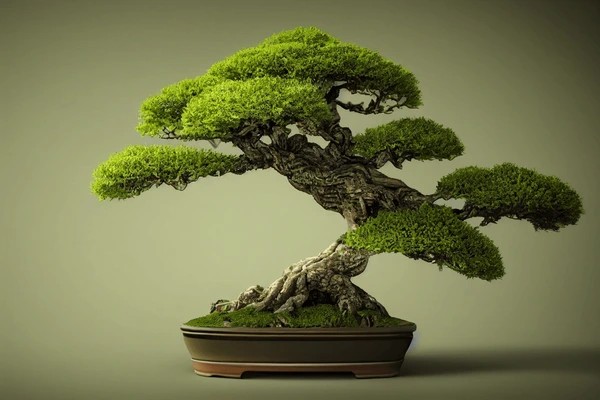Bonsai is a Japanese method of growing miniature trees into a pot through shallow planting, defoliation, pruning, and root reduction to create a living art form. It is the art of creating shrunken plants from full-size trees or shrubs using proper procedures and trimming.
Bonsai wire is used to shape and guide the tree, assisting in the curvature of the trunk and the alignment of uneven branches. Similarly, it embodies the patience, artistry, and dedication of humans to the resilience of nature. Bonsai can last for centuries if it is given adequate care.
Bonsai trees can be classified into indoor and outdoor varieties based on species, climate, and individual characteristics.
Ultimate Guide to Indoor and Outdoor Bonsai Trees: Types, Care, and Tips
Bonsai can be made from both indoor and outdoor species, but the majority of bonsai are trained with outside plants. Outdoor trees are believed to provide the best bonsai because they can grow year-round. The plants are hardy evergreen or deciduous and require natural sunlight, temperature fluctuations, and seasonal changes.
Meanwhile, some plants may require to be moved indoors temporarily during the coldest months for protection against extreme weather conditions. Indoor cultivation provides a controlled environment for the bonsai to thrive.
Similarly, there are only a few tree species that will grow indoors. Ultimately, it is up to you to decide whether to keep your bonsai indoors or outside.
Here we discuss the 10 best Bonsai tree types to cultivate for beginners
Bougainvillea Glabra
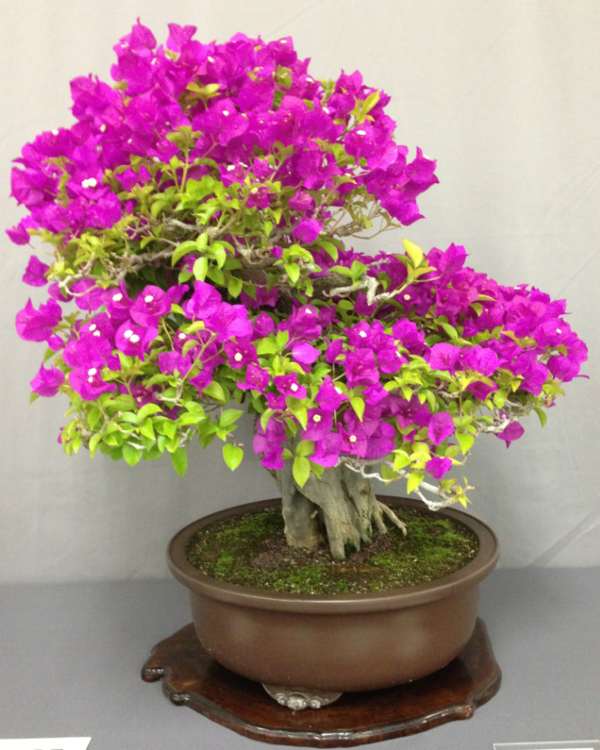
This plant is the most common species used for bonsai. Bougainvillea Glabra is an evergreen shrub with slightly hairy leaves, magenta-colored bracts, prickly stems, and falling branches. It is an outdoor plant that thrives in the summer and fall. It needs a warm, sunny location with highs of at least 50°F (10°C) and generally no more than 59°F (15°C).
When the soil is dry, it should be thoroughly watered. However, constant soil wetness should be avoided because it can cause root rot, fungal problems, pest vulnerability, and, eventually, plant mortality. Similarly, it is crucial to use organic fertilizer regularly, once per month during the growing season and every two weeks in the winter.
Ficus
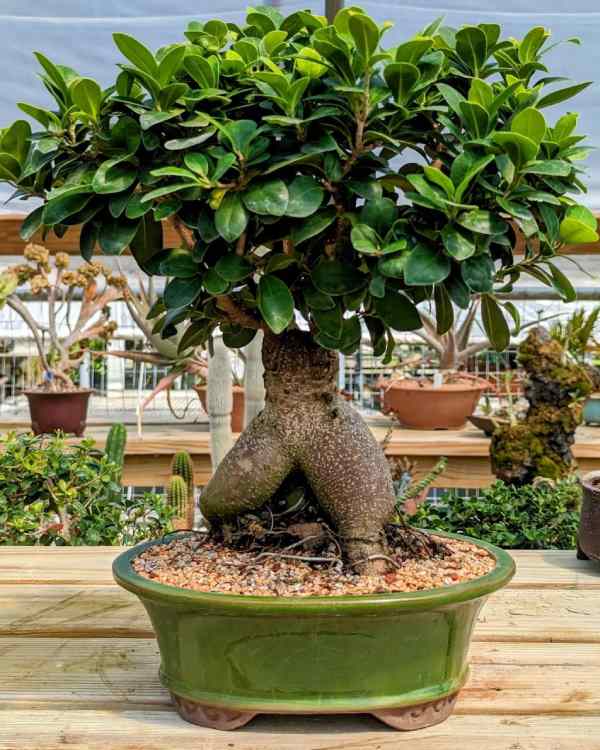
The most popular indoor tree species is Ficus. It looks incredible with oval dark-green leaves. It is a fast-growing species that needs lots of light, so make sure to place it near a south-or-west-facing window.
Ficus can be kept outside during the summer as long as it receives at least eight hours of direct sunlight. This bonsai is not suitable for shady locations as it requires a lot of light, particularly full sun. Similarly, the temperature should be kept relatively constant above 60°F. To prevent the root zone from drying out, you need to maintain the soil consistently moist.
Jade Plant
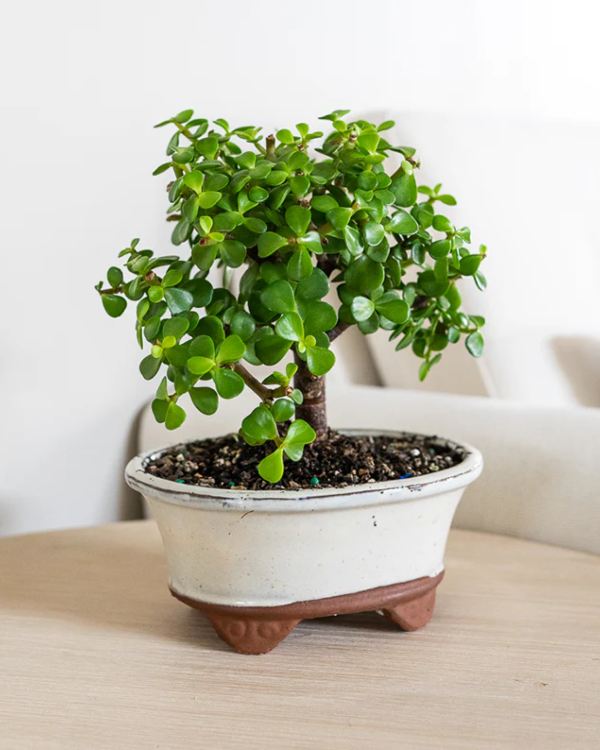
The Jade Plant is a kind of indoor bonsai that has thick, fleshy leaves. It has thick, woody stems and branches that are shaped into many shapes, such as informal upright (moyogi), slanting (shakan), and cascade (kengai).
Jade requires a lot of light, similar to the Ficus. It thrives in temperatures over 45°F and can survive in a brief period of drought.
You do not need to keep the soil continuously moist because, unlike other species, it does not require frequent watering. Meanwhile, it is fine to keep the soil dry out for a bit.
Juniper
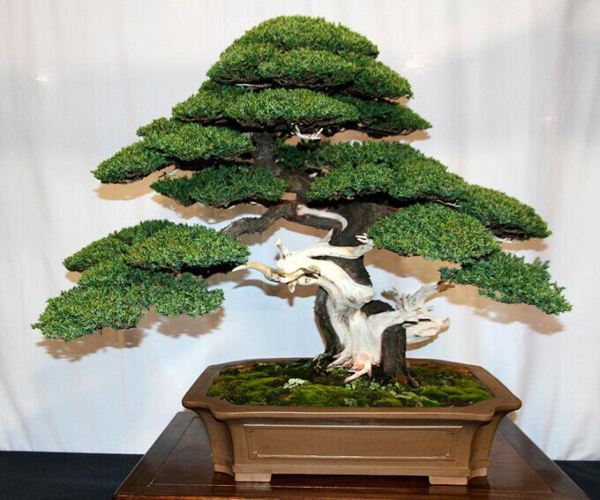
This plant is an ideal outdoor bonsai for beginners. Juniper can be styled in various bonsai forms with needled-like foliage and rugged bark. It thrives in full sun to partial shade, requiring at least 6 hours of direct sunshine every day for optimal growth and foliage density.
Furthermore, it is necessary to use a well-draining bonsai soil mix to avoid waterlogging and promote healthy root growth.
Japanese Maple
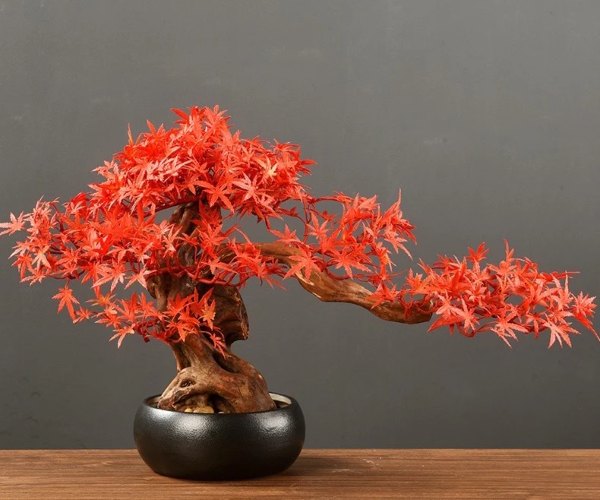
The Japanese maple tree is a notable species that has small, palmate leaves that usually have five to nine lobes. It is easy to customize the visual impact of the bonsai by using informal upright (moyogi), slanting (shakan), cascade (kengai), and broom (hokidachi).
It enjoys moderate shade to full sun, with protection from the harsh afternoon heat in hot areas. Furthermore, it required soil that was well-drained, slightly acidic, and had good moisture retention.
Chinese Elm
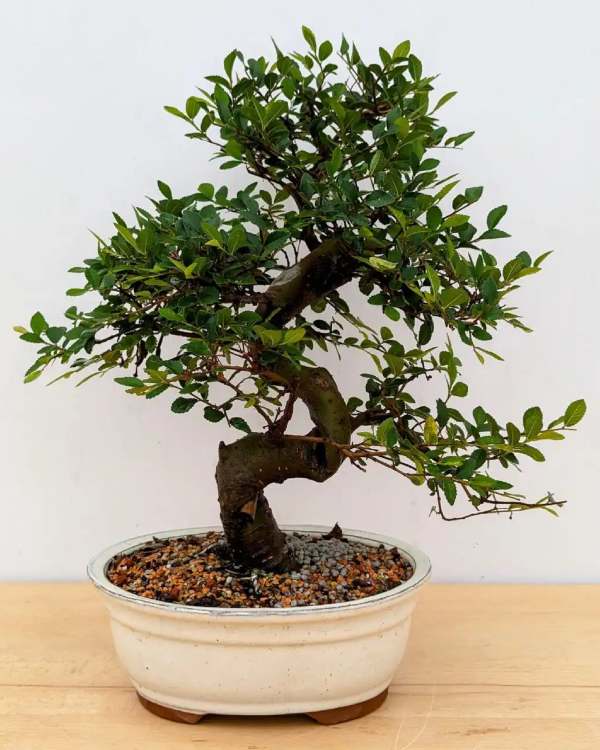
Elm, commonly known as lacebark elm, is a popular choice for bonsai, especially among beginners. It has small, beautiful leaves and bark that is easily pruned and shaped.
It needs the soil to be continuously moist, although it can also be slightly dry out in between irrigations. Soil with good drainage has a role in avoiding root rot and waterlogging.
Chinese elm thrives in either full sun or mild shade. However, it required at least 4-6 hours of direct sunlight per day.
Schefflera
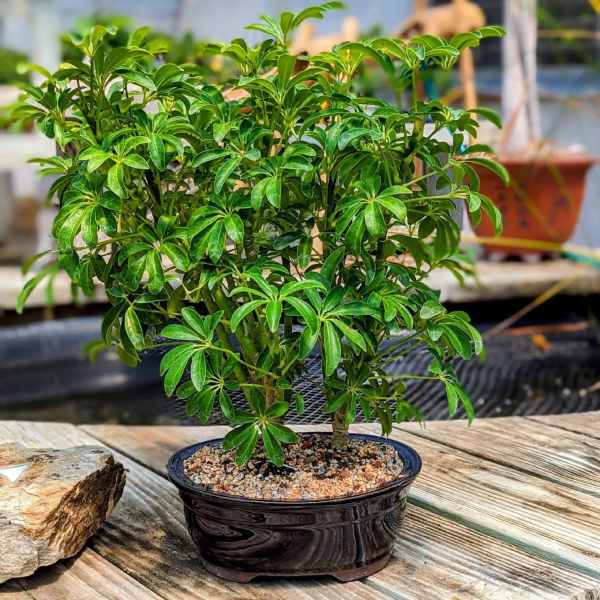
This plant, also known as Umbrella ree bonsai or Schefflera arboricola, has glossy, complex leaves with seven to nine leaflets grouped in an umbrella-shaped design. To prevent leaf burn, it must be placed in bright but indirect light, away from direct sunlight.
Schefflera thrived in warm, humid conditions with a temperature that shouldn’t drop below 50°F (10°C). While avoiding waterlogging, it does require regular soil.
Crape Myrtle
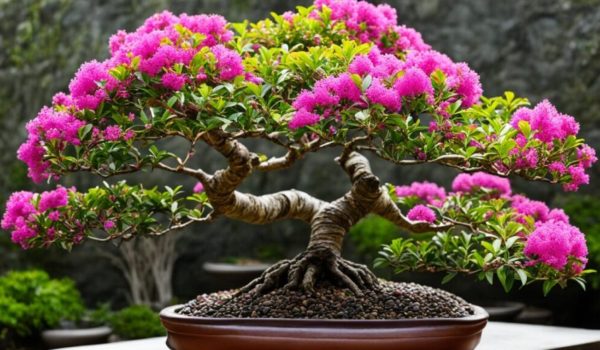
It is one of the easiest bonsai to train and care for. Crape Myrtle produces spectacular, crinkled flowers in a variety of colors, including pink, purple, red, and white.
We must guarantee that we water frequently during the first few growth seasons and utilize a humidity tray in the summer. Similarly, it prefers rich, well-drained soil. When it comes to lighting, the plant likes the sun, thus it needs at least 6 hours of direct sunlight every day.
Trident Maple
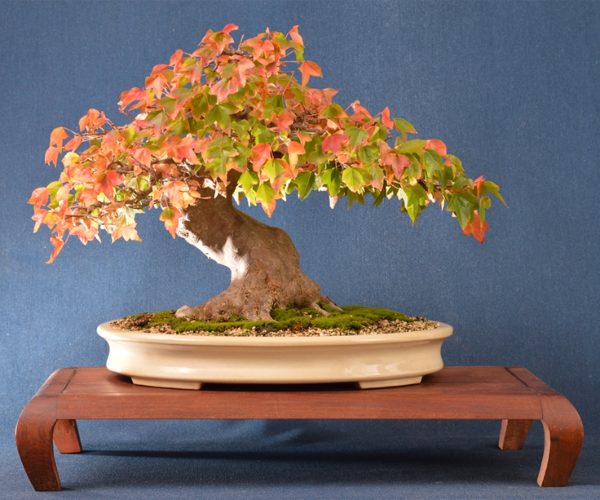
These plants are cherished for their delicate foliage, stunning autumn colors, and graceful appearance. Its leaves have three lobes and are bright green in the spring, turning dark green in the summer and vibrant shades of yellow, orange, and red in the fall.
Trident Maple enjoys partial shade to full sun and requires at least 4-6 hours of direct sunshine every day for best growth and foliage development. We should keep the soil continually moist while allowing it to dry sometime between waterings.
Desert Rose
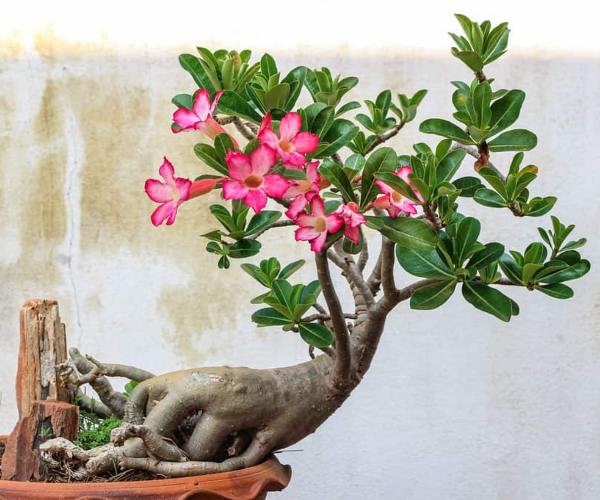
This plant, also known as the Japanese frangipani and Adenium bonsai, is one of the popular choices for bonsai enthusiasts. It has fleshy leaves, and when it receives enough sunlight, it also produces enormous pink, white, or red flowers.
Desert Rose thrives in full sun to partial shade, requiring at least 4-6 hours of direct sunshine every day, but begin by placing it in partial shade before moving to full sun. You can let the soil dry out a little between watering the plant. Similarly, Desert Rose does not require any additional humidity or misting. Maintain warm temperatures of 60-90°F.
Frequently Asked Questions
1. What makes a bonsai tree so special?
Bonsai is a Japanese method of growing miniature trees into a pot through shallow planting, defoliation, pruning, and root reduction to create a living art form. It is the art of creating shrunken plants from full-size trees or shrubs using proper procedures and trimming.
2. Is bonsai outside preferable to indoors?
Outdoor trees are believed to provide the best bonsai because they can grow year-round. The plants are hardy evergreen or deciduous and require natural sunlight, temperature fluctuations, and seasonal changes.
3. How do I know whether my bonsai tree is indoors or outdoors?
Bonsai trees can be classified into indoor and outdoor varieties based on species, climate, and individual characteristics.
Also read, 6 Common Indoor Plants Care Mistakes You’re Making, And Tips to Avoid Them
